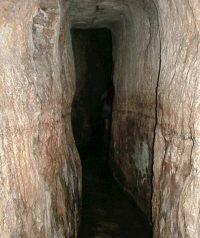 Biblical archaeology involves the recovery and scientific investigation of the material remains of past cultures that can illuminate the periods and descriptions in the Bible. As with the historical records from any other civilization, the manuscripts must be compared to other accounts from contemporary societies in Europe, Mesopotamia, and Africa; additionally, records from neighbors must be compared with them. The scientific techniques employed are those of archaeology in general including excavations as well as chance discoveries.
Biblical archaeology involves the recovery and scientific investigation of the material remains of past cultures that can illuminate the periods and descriptions in the Bible. As with the historical records from any other civilization, the manuscripts must be compared to other accounts from contemporary societies in Europe, Mesopotamia, and Africa; additionally, records from neighbors must be compared with them. The scientific techniques employed are those of archaeology in general including excavations as well as chance discoveries.By contrast Near Eastern archaeology is simply the archaeology of the Ancient Near East without any particular consideration of how its discoveries relate to the Bible.
Biblical archaeology is a controversial subject with differing opinions on what its purpose and goals are or should be.
Biblical Archaeology began after publication by Edward Robinson (American professor of Biblical literature; 1794-1863) of his travels through Palestine during the first half of the 19th century (a time when the oldest complete Hebrew scripture only dated to the Middle Ages), which highlighted similarities between modern Arabic place-names and Biblical city names.
The Palestine Exploration Fund sponsored detailed surveys led by Charles Warren during the late 1860s (initially financed by Angela Georgina Burdett-Coutts in 1864 to improve Jerusalem's sanitary conditions), which culminated with the formal publication of "The Survey of Western Palestine" from 1871-1877.
More...


No comments:
Post a Comment